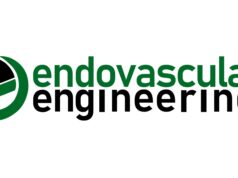 A recent research article has detailed an artificial intelligence (AI) model that enables physicians to predict which patients with superficial venous insufficiency have a higher risk of developing deep vein thrombosis (DVT) following endovenous thermal ablation (EVTA).
A recent research article has detailed an artificial intelligence (AI) model that enables physicians to predict which patients with superficial venous insufficiency have a higher risk of developing deep vein thrombosis (DVT) following endovenous thermal ablation (EVTA).
Published in the Journal of Vascular Surgery: Venous and Lymphatic Disorders (JVS-VL), the research team, led by Azadeh Tabari (Massachusetts General Hospital, Boston, USA), state that concern surrounding the potential for thromboembolic complications following EVTA persist. Although rare, these complications can often be severe, necessitating early identification of patients prone to increased risks.
Aimed at leveraging AI algorithms to forecast patients’ likelihood of developing DVT within 30 days post-EVTA, the research team’s evaluation included all patients who underwent EVTA from 2007 to 2017 using the American College of Surgeons National Surgical Quality Improvement Program (ACS-NSQIP) database.
The authors developed and compared the performance of four machine learning models: Classification and Regression Trees (CART), Optimal Classification Trees (OCT), Random Forest, and Extreme Gradient Boosting (XGBoost).
Conventional models to identify risk factors typically do so via univariate or multivariate regression techniques, Tabari and colleagues describe; “however, these approaches often struggle to capture interactions and nonlinear relationships among variables”. In their belief, machine learning models are “better equipped to recognise intricate patterns” among variables.
A total of 21,549 patients were included with a mean age of 54±14 years; 67% of patients were female. In this cohort, 1.59% developed DVT. The team’s results showed that the XGBoost model had good discriminative power for predicting DVT risk at 30 days post-procedure, with “good” sensitivity compared to the OCT, CART and Random Forest models. Tabari and colleagues write that this is primarily due to the model’s ability to capture relationships between predictive variables seen in the ACS-NSQIP database, which were found to be age, body mass index (BMI), preoperative white blood cell count, and platelet count.
“In medical decision-making, ensuring the interpretability of these models is essential, as transparency is a key concern when incorporating AI into clinical insights,” write Tabari et al. They state that, although prognostic tools for venous thromboembolism (VTE) exist for patients with underlying conditions, they believe that theirs is the “first attempt to utilise an AI-based tool for predicting the risks of developing DVT following EVTA”. They write that this model is aimed to help personalise medical decisions to minimise the risk of DVT developing in this patient population.
The research team note that the study has limitations, these being an overreliance on the ACS-NSQIP database, which primarily represents large teaching hospitals, limiting generalisability. Tabari and colleagues also note that the database only captures 30-day outcomes, which precludes longer-term DVT risk assessment and lacks important clinical variables such as intervened vessels, operator expertise and procedural variations.









